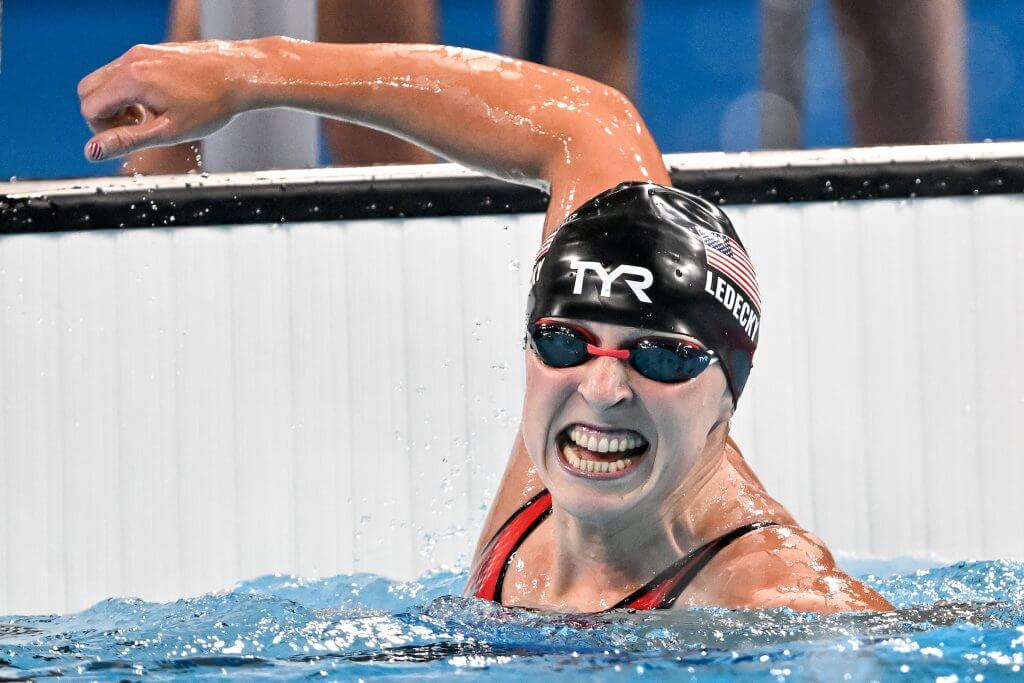Closing the Gap: How Long It Takes for Women’s World Records to Catch Up to Men’s Marks (Full Chart)
Katie Ledecky. Summer McIntosh. Kaylee McKeown. There is no shortage of starpower on today’s women’s scene, with all-timers gracing the sport with their presence. Given this special era, a question arose: How long has it taken women to match the world-record marks of their male counterparts? By looking at women’s world records, and comparing them to the years in which men achieved those times, we get an idea of which events are growing the most, or feature a generational talent who defies the norm.
Finding the Average
How long does it typically take for a women’s world record to catch up to a men’s record? We found that the average is 47 years. Of course, this figure is an average, as the difference between the shortest and longest gaps sat at 14 years.
The 200 Butterfly of Liu Zige
When China’s Liu Zige clocked 2:01.81 in the 200 butterfly near the end of the super-suit era, the time boggled the mind. The record was deemed untouchable, and indeed has been on the books for nearly 16 years. However, Summer McIntosh recently gave the record a scare with an effort of 2:01.99, Liu’s effort seems to be on borrowed time.
When Liu established the world record, her time was faster than the 2:01.87 of Mark Spitz from the 1972 United States Olympic Trials. That 37-year gap was on the short side of what it normally takes for a woman to match a men’s world record.
The 100 Backstroke Plays Catchup
While the 200 butterfly featured a tight window, the largest time gap can be found in a recent world record. At the 2024 Olympic Trials, Regan Smith stunned the thousands in attendance, winning the 100 backstroke in record time. It took 54 years for Smith to better a record set by East German Roland Matthes.
Katie Ledecky Breaks the Norm
Liu Zige’s record in the 200 butterfly wasn’t the only standard to take less time to catch up with the men. When Katie Ledecky produced her legendary 1500 freestyle record of 15:20.48 in 2018, it arrived nearly 43 years after the United States’ Tim Shaw covered 30 laps of freestyle in 15:20.91. With Ledecky established as a generational talent, it’s not surprising that she significantly cut the average of catching the guys.
On par with Ledecky was Sweden’s Sarah Sjostrom, who blasted a 23.61 performance in the 50 freestyle at the 2023 World Championships. Sjostrom’s showing came 43 years after American Chris Cavenaugh touched the wall in 23.66. It is necessary to note, though, that the 50 freestyle only started tracking world records in 1976, when the event became a mainstream discipline.
Distance vs. Sprint vs. Middle Distance
Looking further at the gaps between women’s and men’s world records, we wondered: Is there a type of women’s event that has generally closed the gap in a more impressive manner? Officially, the answer is yes, but the outcome is minimal. Distance events (400-and-up) saw a 46-year average timeframe between male and female records, while mid-distance events (200s) took 46.6 years. Sprint events took the longest for the women to catch the men, checking in at 47.8 years.
The following graph shows the current women’s world records and how long ago it was the men’s world record.
